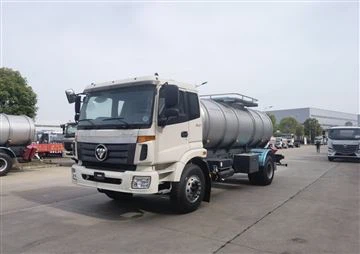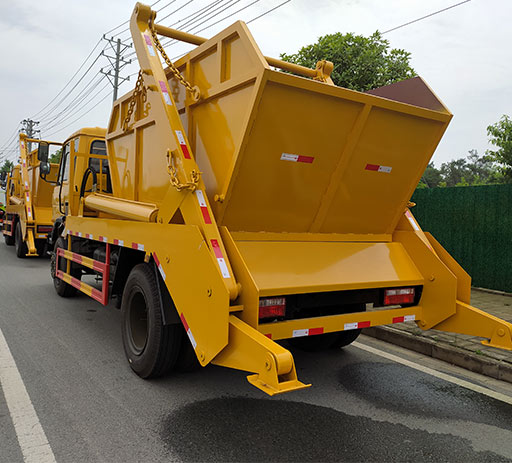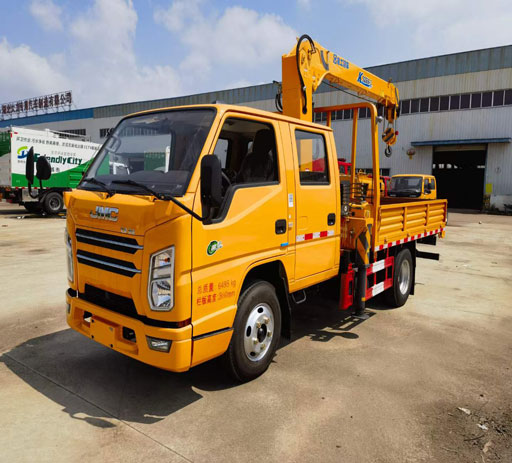Full Trailer vs Semi Trailer: Understanding the Differences

When it comes to transporting goods, understanding the types of trailers used in logistics and freight transportation is essential. The two primary types of trailers you’ll frequently encounter are full trailers and semi trailers. Although they may seem similar, they serve different purposes and offer unique features. This article provides a comprehensive overview of full trailers and semi trailers, helping you decide which one is right for your transportation needs.
What is a Full Trailer?
A full trailer, also known as a “towed trailer,” is a type of trailer that is capable of carrying its load entirely on its own wheels. It has a front axle that is connected to a towing vehicle, allowing it to be maneuvered independently. Full trailers are commonly used in various transportation sectors due to their stability and load-carrying capacity.
Features of Full Trailers
- Independent Axles: Full trailers consist of two or more axles, which support the weight of the load. This configuration allows them to distribute the weight more evenly, leading to better balance and stability.
- Enhanced Load Capacity: Full trailers can carry a heavier load compared to semi trailers, making them suitable for transporting goods over long distances.
- Versatile Loading Options: They enable a variety of loading methods, including side loading and rear loading.
What is a Semi Trailer?
A semi trailer is a type of trailer that does not have a front axle but relies on the rear of the trailer to be attached to a tractor or truck. Because of this design, the weight of the load is supported by both the semi trailer and the towing vehicle. Semi trailers are the most common trailers seen on highways today, making them a vital element in freight transportation.
Features of Semi Trailers
- Reduced Weight: Semi trailers are generally lighter than full trailers, allowing for greater fuel efficiency.
- Flexibility in Loading: They offer quick loading and unloading options due to their design, making them ideal for time-sensitive deliveries.
- Compact Size: Their design allows them to fit into more compact loading docks and parking areas, enhancing urban delivery capabilities.
Key Differences Between Full Trailers and Semi Trailers
1. Axle Configuration
The most significant difference between full trailers and semi trailers lies in their axle configuration. Full trailers have their own axles, whereas semi trailers rely on the towing vehicle for balance and movement.
2. Weight Distribution
Weight distribution is another crucial factor. Full trailers distribute weight evenly across their axles, while semi trailers have a portion of the load supported by the truck or tractor, affecting how they’re loaded and maneuvered.
3. Maneuverability
Full trailers have the advantage of being more stable during turns due to their independent axles, making them easier to maneuver in tight spots. Semi trailers, however, may require extra caution when making sharp turns due to their design.
4. Load Capacity
In general, full trailers can carry heavier loads compared to semi trailers, which might have legal limits on how much weight can be transported due to the distribution of the load.
Types of Full Trailers
Full trailers come in various types, including:

1. Cargo Trailers
These are enclosed trailers used primarily for transporting goods that need protection from the elements.
2. Flatbed Trailers
Flatbed trailers are open trailers without sides or a roof. They are used for transporting larger items that do not require enclosed protection.
3. Refrigerated Trailers
Also known as reefer trailers, these are insulated to maintain a specific temperature, ideal for transporting perishable goods.
Types of Semi Trailers
Likewise, there are different types of semi trailers, including:
1. Dry Van Trailers
These are enclosed trailers for carrying non-perishable items. They protect cargo from weather and theft.
2. Flatbed Semi Trailers
Similar to full flatbeds, these are open at the top and sides, providing versatility in loading and unloading larger items.
3. Refrigerated Semi Trailers
Just like their full trailer counterparts, these are designed to transport temperature-sensitive merchandise.
When to Use Full Trailers vs. Semi Trailers
1. Industry Requirements
Choosing between a full trailer and a semi trailer often depends on industry needs. For instance:
- Construction: Full trailers may be preferred for heavy equipment due to their load capacity.
- Retail: Semi trailers are often used for quick deliveries of goods to stores.

2. Transportation Distance
For long-distance hauling, a full trailer’s load capacity can be advantageous. On the other hand, semi trailers are often more efficient for shorter urban deliveries.
3. Budget Constraints
Considering maintenance costs, semi trailers may provide an economical option for businesses with tight budgets due to their lighter weight and greater fuel efficiency.
Practical Examples of Full Trailers and Semi Trailers in Use
Example 1: Full Trailer in the Construction Industry
A construction company uses full trailers to transport heavy equipment like bulldozers and backhoes to job sites. The full trailer’s ability to carry significant weight and stability during transport makes it ideal for this purpose.
Example 2: Semi Trailer in Retail Distribution
A logistics company uses semi trailers to deliver products to retail stores across city limits. The ease of loading and unloading makes it efficient for quick turnaround, critical in fulfilling retail orders.
Tips for Choosing Between Full Trailers and Semi Trailers
1. Assess Your Load
Before making a choice, evaluate the type and weight of the cargo you need to transport. This will greatly influence your decision.
2. Consider the Delivery Environment
If you operate in urban areas with tight spaces, semi trailers may offer better maneuverability. Full trailers may be better suited for job sites with more space.
3. Evaluate Cost Considerations
Analyze both initial and long-term costs, including fuel, maintenance, and insurance, for both types of trailers to determine which fits your budget better.
FAQ Section
1. What is the primary advantage of full trailers over semi trailers?
The primary advantage of full trailers is their ability to carry heavier loads due to their independent axle configuration, offering enhanced stability during transport.

2. Can semi trailers carry as much weight as full trailers?
No, semi trailers typically have weight limits that might restrict the amount of load they can transport compared to full trailers.
3. Are full trailers easier to maneuver than semi trailers?
Full trailers are generally easier to maneuver due to their independent axles, which allow better stability during turning.
4. Which type of trailer is more fuel-efficient?
Semi trailers tend to be more fuel-efficient due to their lighter weight, allowing for better fuel economy during transport.
5. What types of cargo are best suited for full trailers?
Full trailers are best suited for heavy equipment, vehicles, and bulk materials that require a stable and secure transport method.
6. Is it possible to convert a full trailer to a semi trailer?
It is not typically feasible to convert full trailers into semi trailers due to their different design and structural elements. Each type of trailer is engineered for specific functions.
